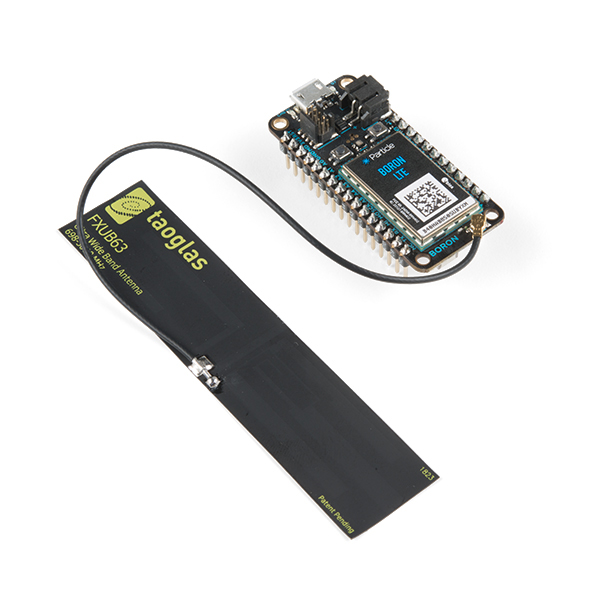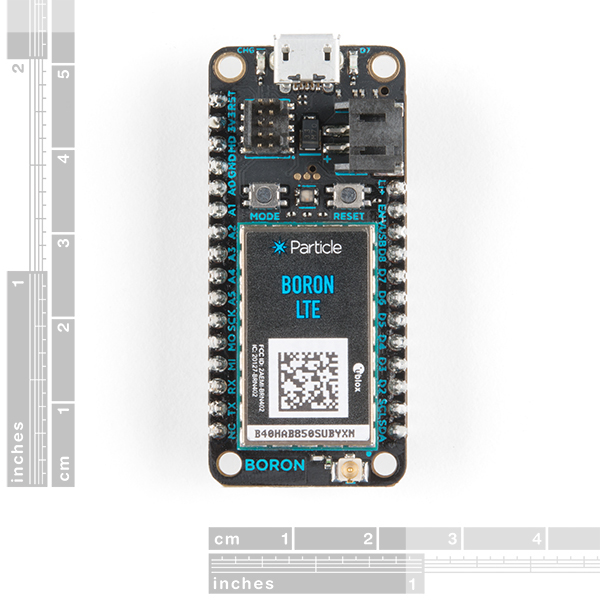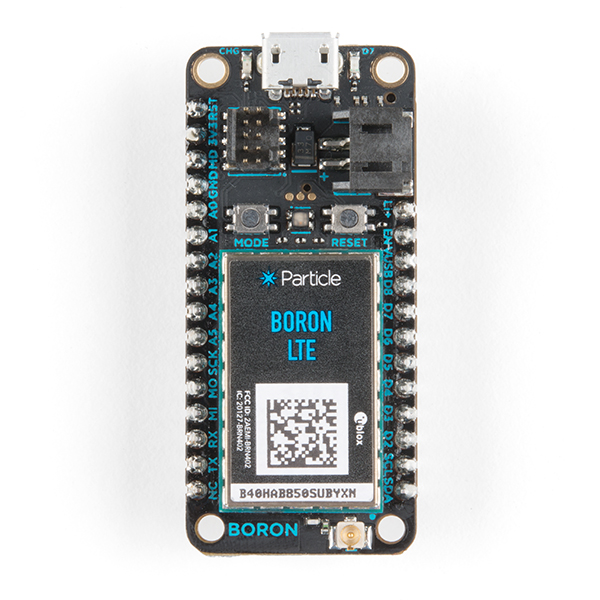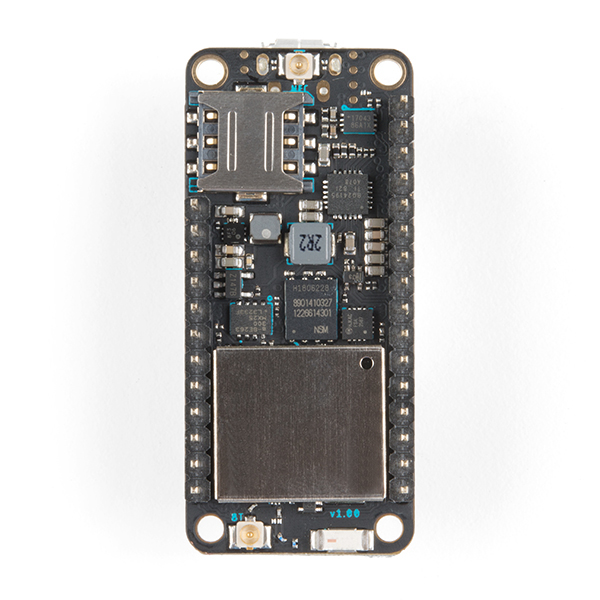Particle Boron LTE IoT Development Board
The Particle Boron is a LTE CAT-M1/NB1 enabled development board that allows you to connect your mesh network to over a cellular service. With the Nordic nRF52840 SoC and two SARA cellular modules you have all the power of an ARM Cortex M4 with OpenThread mesh networking, LTE cellular connectivity, NFC, plenty of GPIOs, LiPo charging and more. The board is designed to act as a standalone cellular endpoint or an LTE enabled gateway for a Particle Mesh network.
The Boron is also configured in the popular Feather footprint and so is compatible with Feather Shields! That means it includes a JST connector for a Li-po battery as well as charging of the battery over USB. Particle also provides an RGB status LED and a JTAG (SWD) connector for debugging and an onboard PCB antenna for your mesh network. You will need to connect a cellular antenna to the U.FL connector to use the cellular connectivity.
The Boron comes with access to the Device Cloud (10 free micro networks available) as well as three free months of device Cloud access using a cellular gateway. The Particle Could has some great features for building connected projects, including over-the-air firmware updates, and easy-to-use REST API, and firmware development supported by web and local IDEs.
- u-blox SARA-R410-02B LTE modem
- LTE CAT M1/NB1 module with global hardware support (MVNO support for US only)
- 3GPP Release 13 LTE Cat M1
- Cat M1/NB1 bands: 2,3,4,5,8,12,13,20,28
- Nordic Semiconductor nRF52840 SoC
- ARM Cortex-M4F 32-bit processor @ 64MHz
- 1MB flash, 256KB RAM
- IEEE 802.15.4 - 2006: 250Kbps
- Bluetooth 5: 2Mbps, 1Mbps, 500Kbps, 125Kbps
- Supports DSP insturctions, HW accelerated Floating Point Unit (FPU) calculations
- ARM TrustZone CryptoCell-310 Cryptographic and security module
- Up to +8 dBm TX power (down to -20dBm in 4dB steps)
- NFC-A tag
- On-board additional 4MB SPI flash
- 20 mixed signal GPIO (6x Analog, 8x PWM), UART, I2C, SPI
- Integrated Li-Po charging and battery connector
- JTAG (SWD) Connector
- RGB status LED
- Reset and Mode buttons
- On-board PCB antenna for mesh network
- u.FL connectors for external antennas for mesh network, NFC, and cellular
- FCC, PTCRB certified. RoHS compliant
- On-board MFF2 Sim
- Nano Sim Holder
Particle Boron LTE IoT Development Board Product Help and Resources
Three Quick Tips About Using U.FL
December 28, 2018
Quick tips regarding how to connect, protect, and disconnect U.FL connectors.
Core Skill: Programming
If a board needs code or communicates somehow, you're going to need to know how to program or interface with it. The programming skill is all about communication and code.
Skill Level: Competent - The toolchain for programming is a bit more complex and will examples may not be explicitly provided for you. You will be required to have a fundamental knowledge of programming and be required to provide your own code. You may need to modify existing libraries or code to work with your specific hardware. Sensor and hardware interfaces will be SPI or I2C.
See all skill levels
Core Skill: Electrical Prototyping
If it requires power, you need to know how much, what all the pins do, and how to hook it up. You may need to reference datasheets, schematics, and know the ins and outs of electronics.
Skill Level: Rookie - You may be required to know a bit more about the component, such as orientation, or how to hook it up, in addition to power requirements. You will need to understand polarized components.
See all skill levels
Comments
Looking for answers to technical questions?
We welcome your comments and suggestions below. However, if you are looking for solutions to technical questions please see our Technical Assistance page.
Customer Reviews
No reviews yet.





photo shows ant. yes or no?
Yes, that is an antenna in the photo. If you look up Taoglas, you will find that they specialize in antenna solutions. Searching for FXUB63 in their product catalog, you can find the product page showing that it is a 2G/3G/4G wide-band 698-3000MHz flexible PCB antenna.